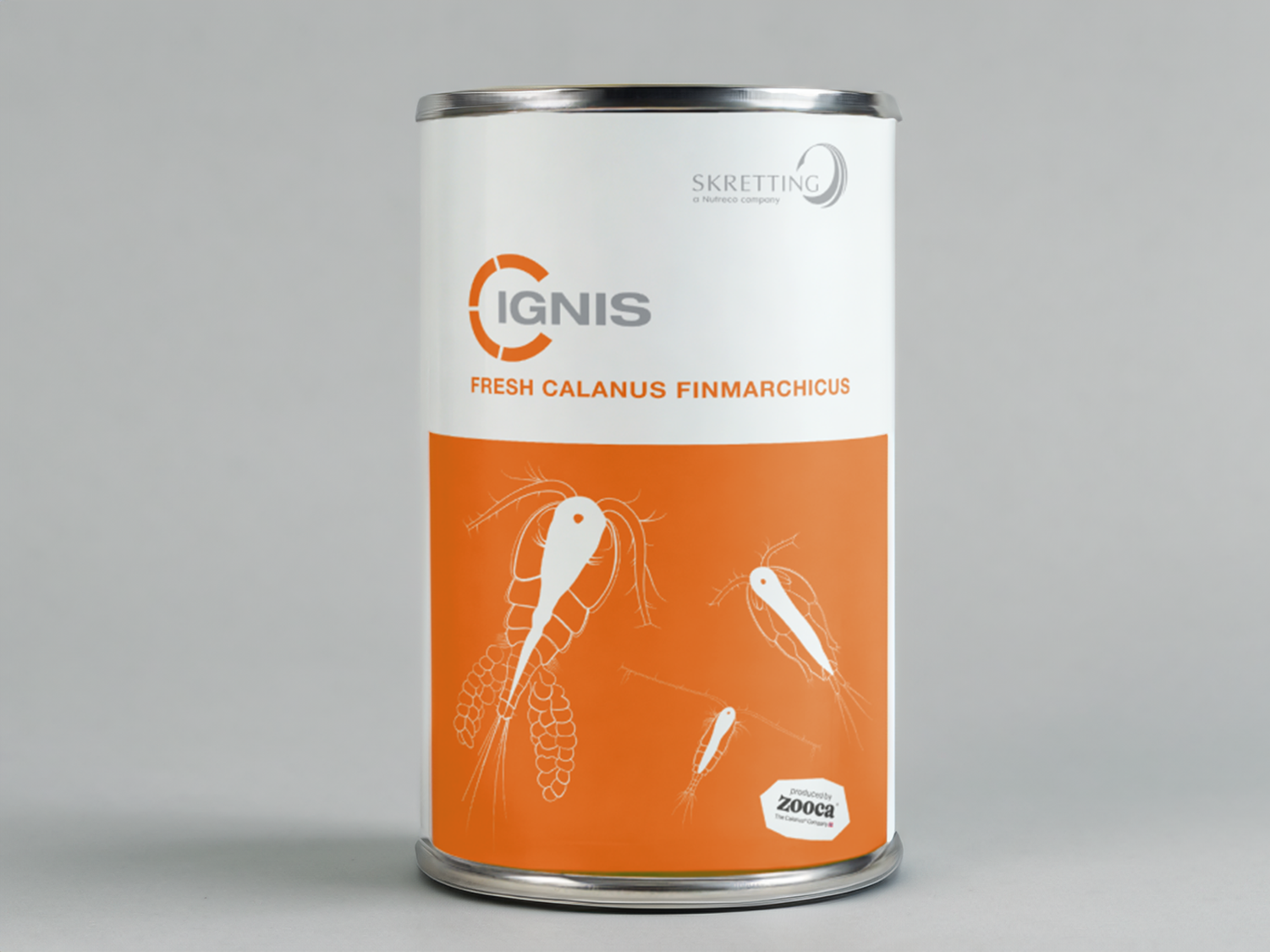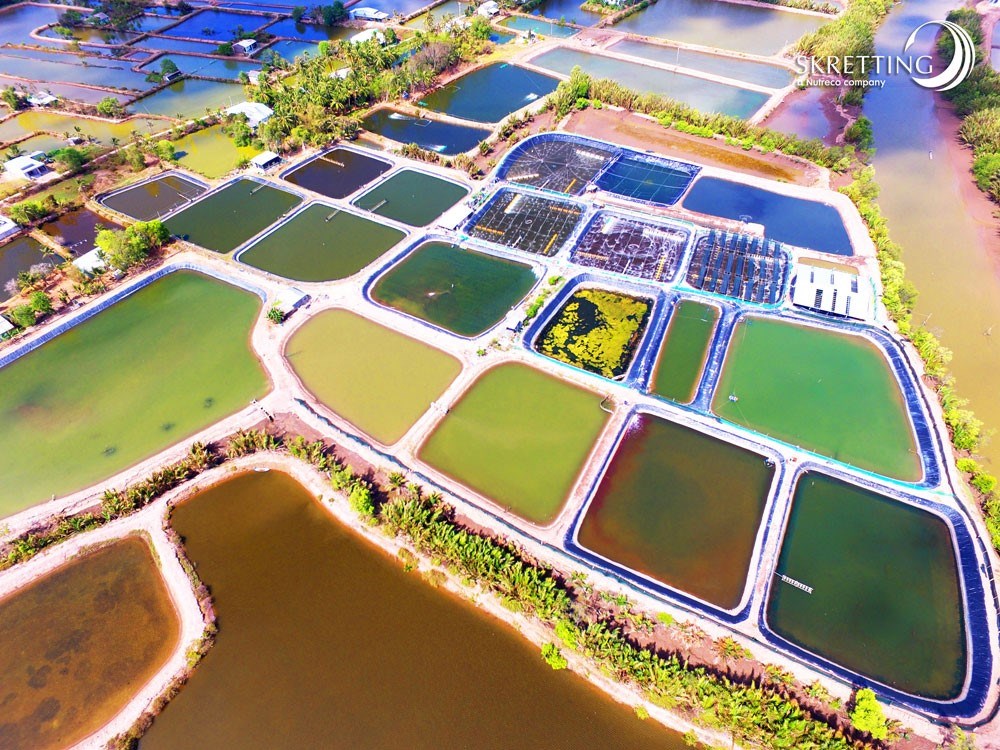With the introduction of Ignis – developed in collaboration with Zooca Calanus- Skretting customers now have access to fresh, canned Calanus finmarchicus.
Skretting and Zooca Calanus introduce Ignis, nature’s baby food for marine juveniles

Calanus finmarchichus is a tiny marine copepod rich in essential nutrients. This abundant resource offers marine juveniles high-quality nutrition, promoting efficient feed intake and digestion.
Ignis, manufactured by Zooca Calanus, was recently introduced during Larvi 2024, which took place from September 9-12 in Ostend, Belgium. Present at the launch were Hogne Abrahamsen, Zooca Calanus group CSO, Eamonn O’Brien, Global Product Manager LifeStart from Skretting, and Dr. Philippe Dhert, Senior Researcher from Skretting. After learning about the effects of Ignis in shrimp nursery, attendees had the opportunity to experience the product in a “touch and feel” session.
The-ready-to-use copepods offer a new level of convenience, as well as opportunities to refine larval production and shrimp broodstock feeding. “R&D results have shown that, when used during the transition period, shrimp fed with Ignis had a higher survival rate. We also observed that the shrimp larvae were immediately attracted to the copepods, and that water turbidity was not impacted,” says Dr. Philippe Dhert.
“Our partnership with Zooca Calanus aligns with our mutual dedication to drive positive change in the aquaculture industry, and underscores our shared vision for a more sustainable future. We look forward to introducing this innovation to the market together and making a lasting impact on the global aquaculture landscape,” says Eamonn O’Brien.
Our partnership with Zooca Calanus aligns with our mutual dedication to driving positive change in the aquaculture industry and underscores our shared vision for a more sustainable future.
Ignis will be made available through the Skretting network and is currently being rolled out in European hatcheries, with more countries to follow.
